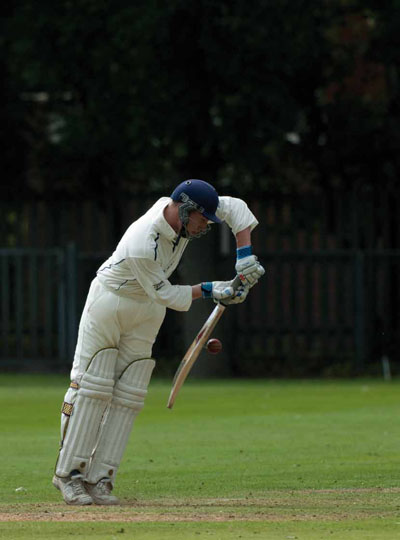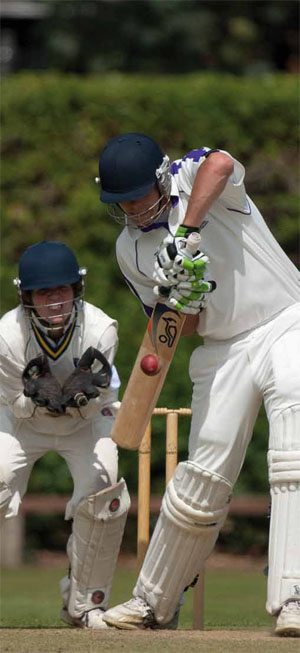articles/Sports/cricketmathstripodsnature-page1
On cricket, maths, tripods and nature - part 1 of 1 2 3 4 5 6 7 8
by Mike McNamee Published 01/12/2009

On cricket, maths, tripods and nature
On cricket, maths, tripods and nature McNamee takes a wander along the green spaces of England
One of the myths about sports photography is that you have to shoot everything by holding your finger down on the shutter release and keep the motor drive running the whole time. Nothing could be further from the truth for many (but not all) sports.
The start of a grand prix is a classic example of where you might simply hold down the motor drive as the cars move away. Incidents frequently occur at this point of the race and should they do so you have to be locked into the view as it unfolds with little hope of changing much other than focus.

It is for sports that involve hitting a ball or jumping over things that timing becomes really important. Timing in this instance means synchronising the shutter to the precise moment of impact. Any moment before or after this moment is unlikely to capture the ball in fast sport (eg tennis, cricket, ice hockey, squash, badminton) although it is not quite such a problem in soccer or rugby as the ball moves more slowly.
If we take cricket as a worked example we can do some sums. Cricket has the supreme advantage that most of the action takes place in one spot (ie in front of the wicket) and this action repeats itself every delivery. In a 50-overs match there are about 300 deliveries, more if you count no balls, fewer if there is a batting collapse.
That represents 600 deliveries for the whole match and if you shoot two or three frames per delivery, a total of between 1,200 and 1,800 frames.
You are currently on page 1
- On cricket, maths, tripods and nature page 1
- On cricket, maths, tripods and nature page 2
- On cricket, maths, tripods and nature page 3
- On cricket, maths, tripods and nature page 4
- On cricket, maths, tripods and nature page 5
- On cricket, maths, tripods and nature page 6
- On cricket, maths, tripods and nature page 7
- On cricket, maths, tripods and nature page 8
1st Published 01/12/2009
last update 18/07/2022 16:35:43
More Sports Articles
There are 15 days to get ready for The Society of Photographers Convention and Trade Show at The Novotel London West, Hammersmith ...
which starts on Wednesday 14th January 2026








